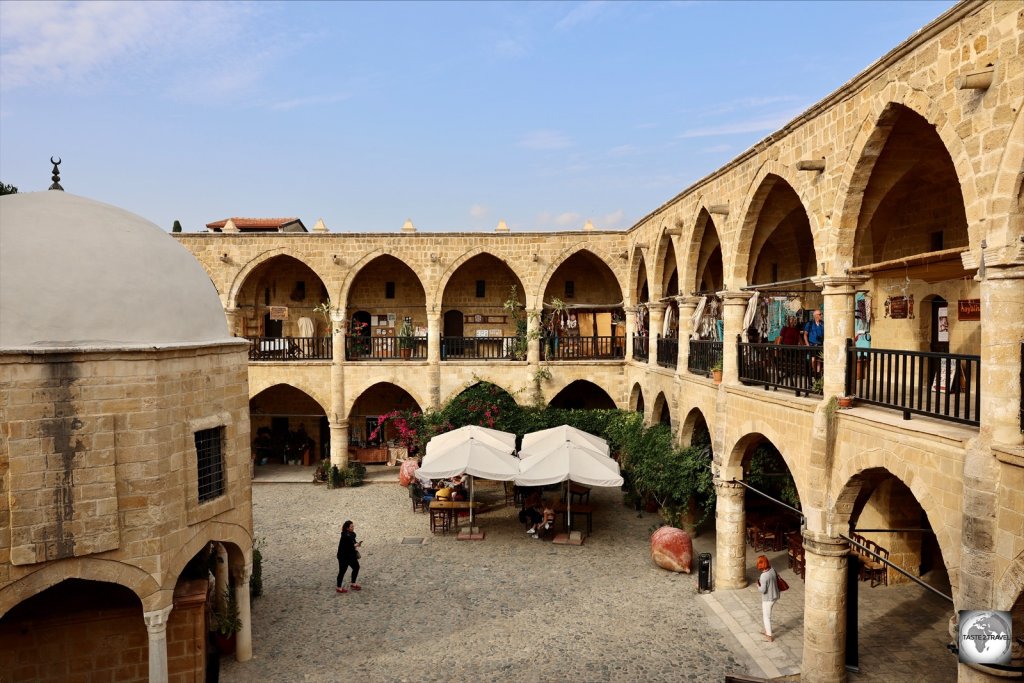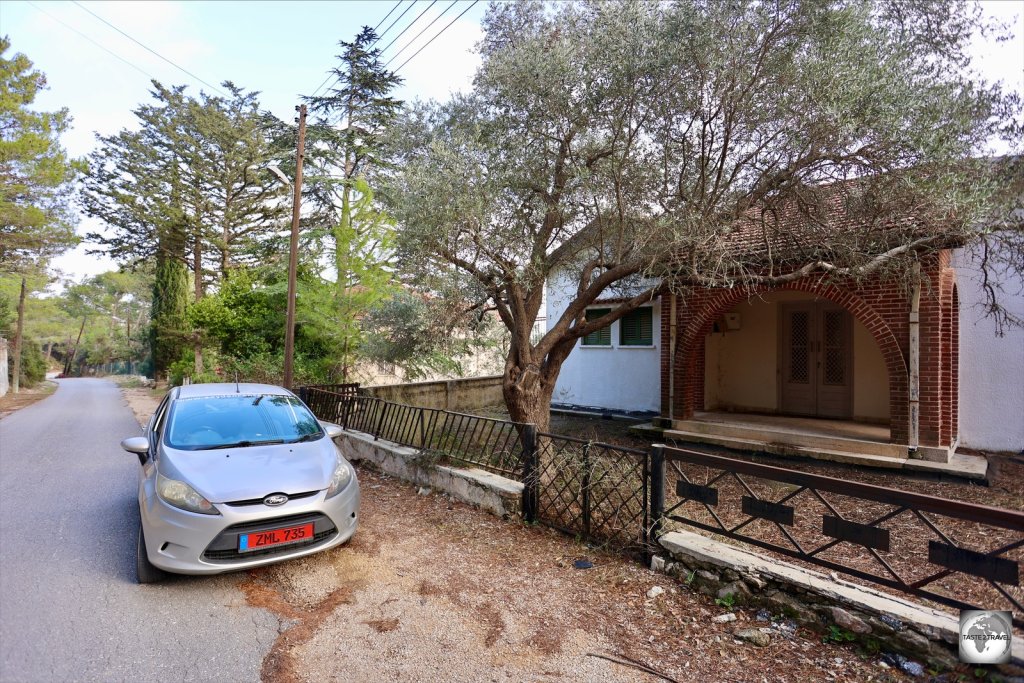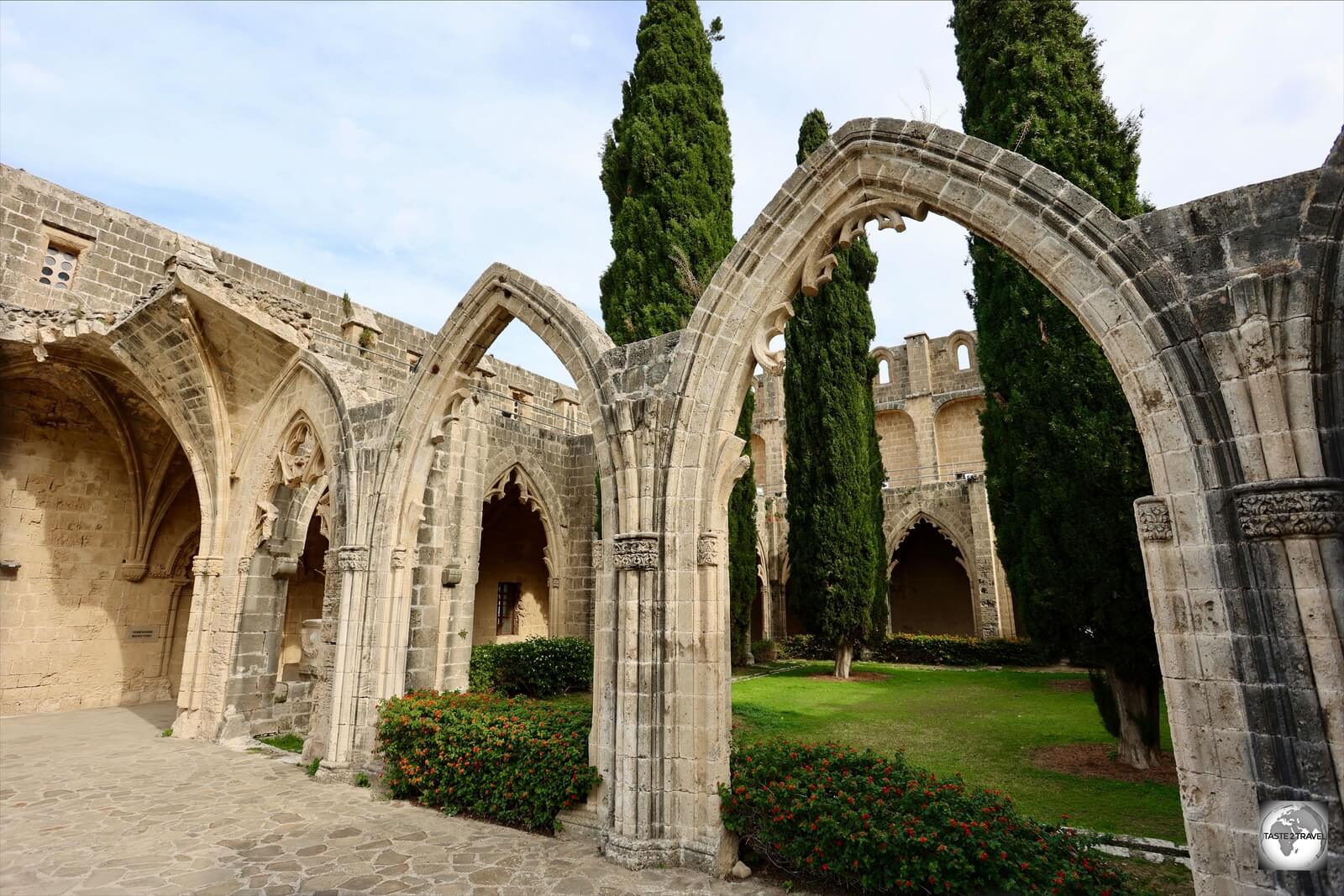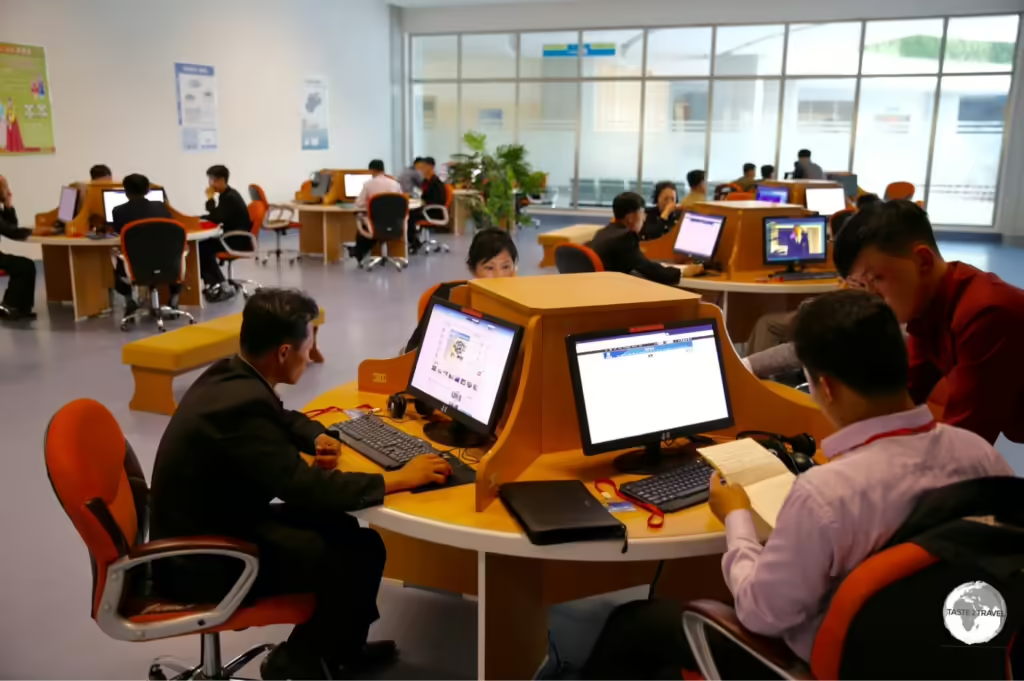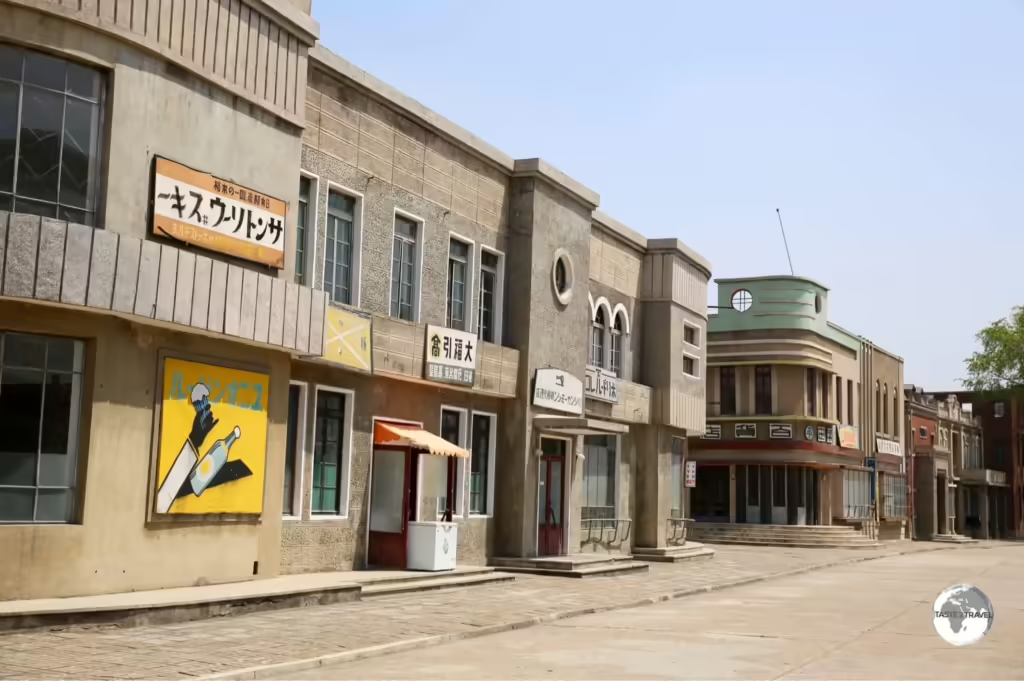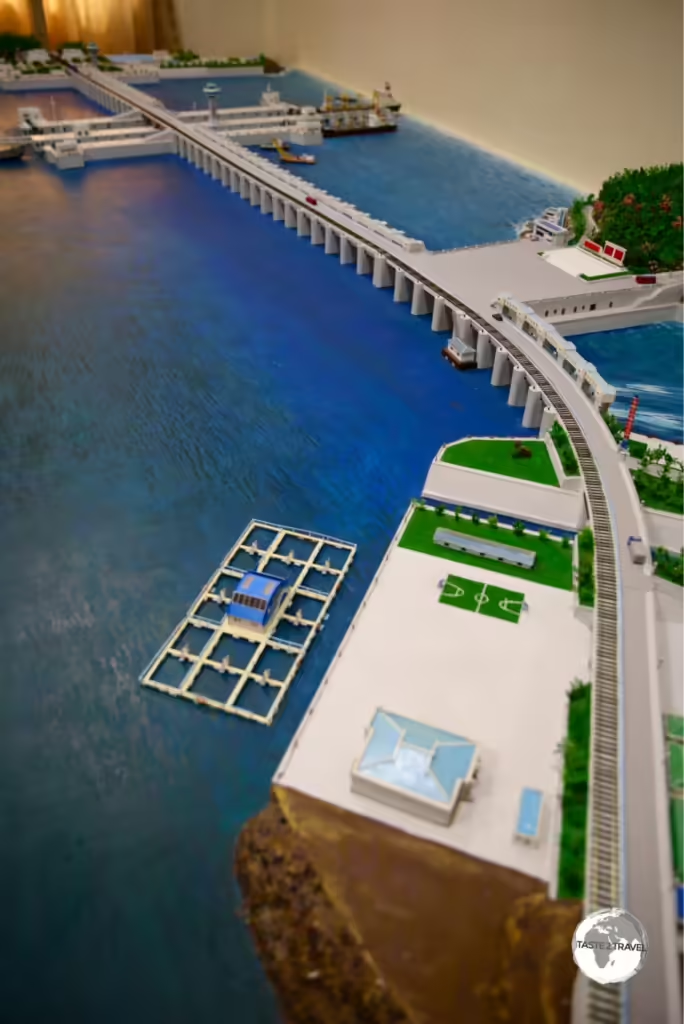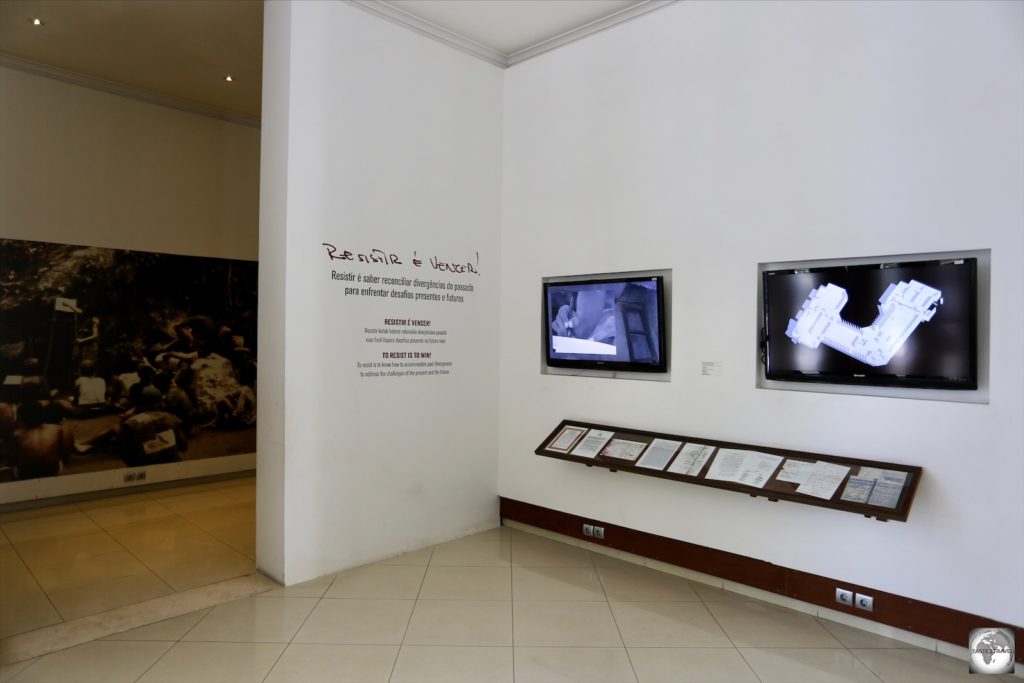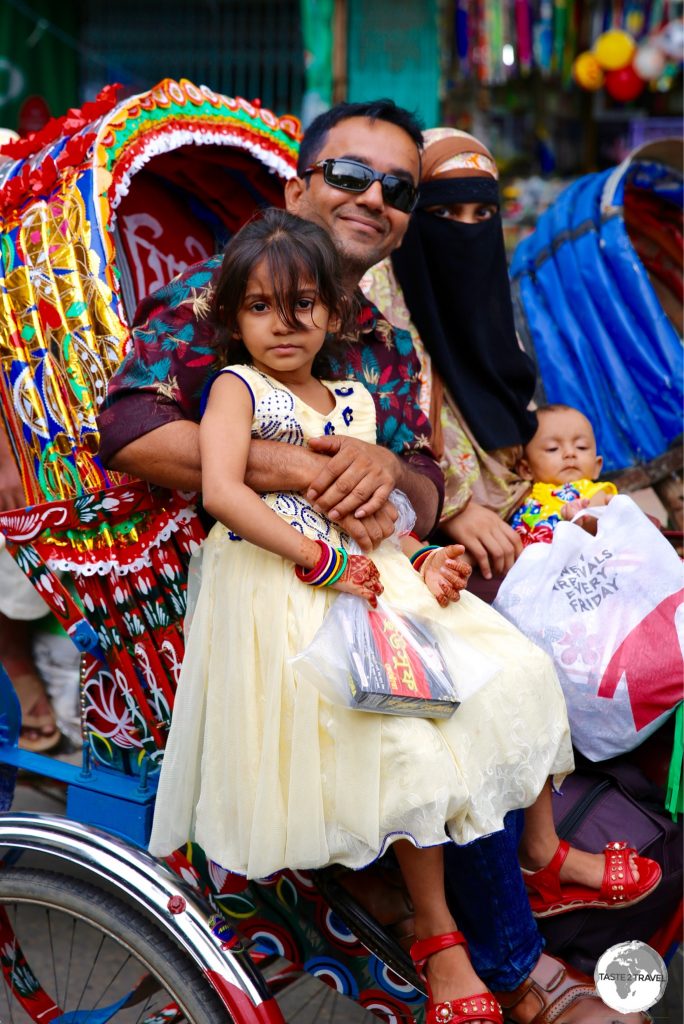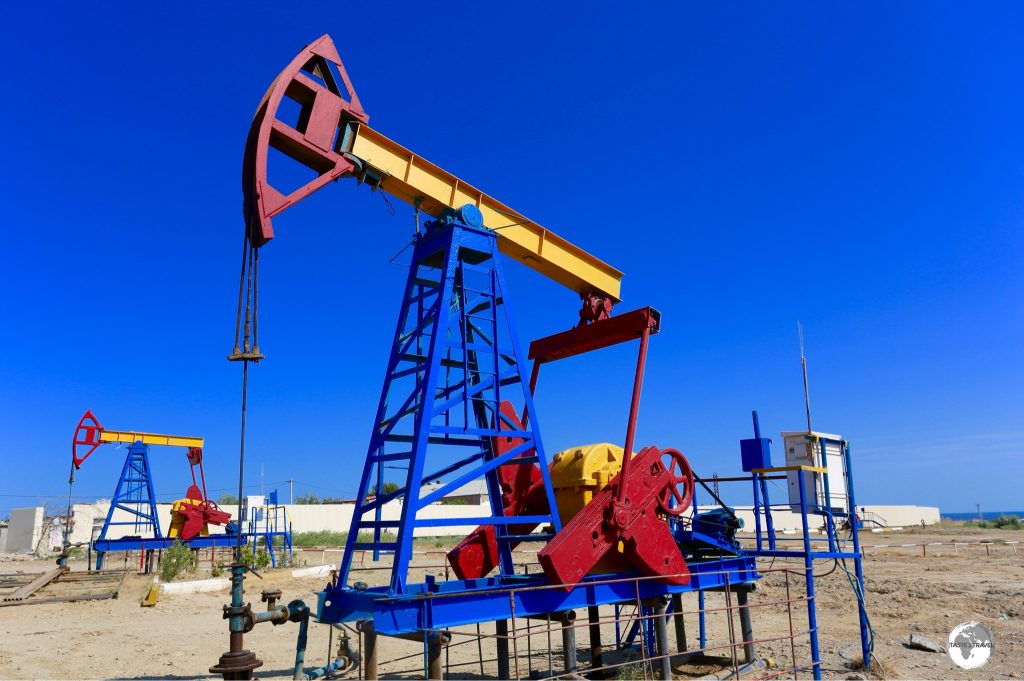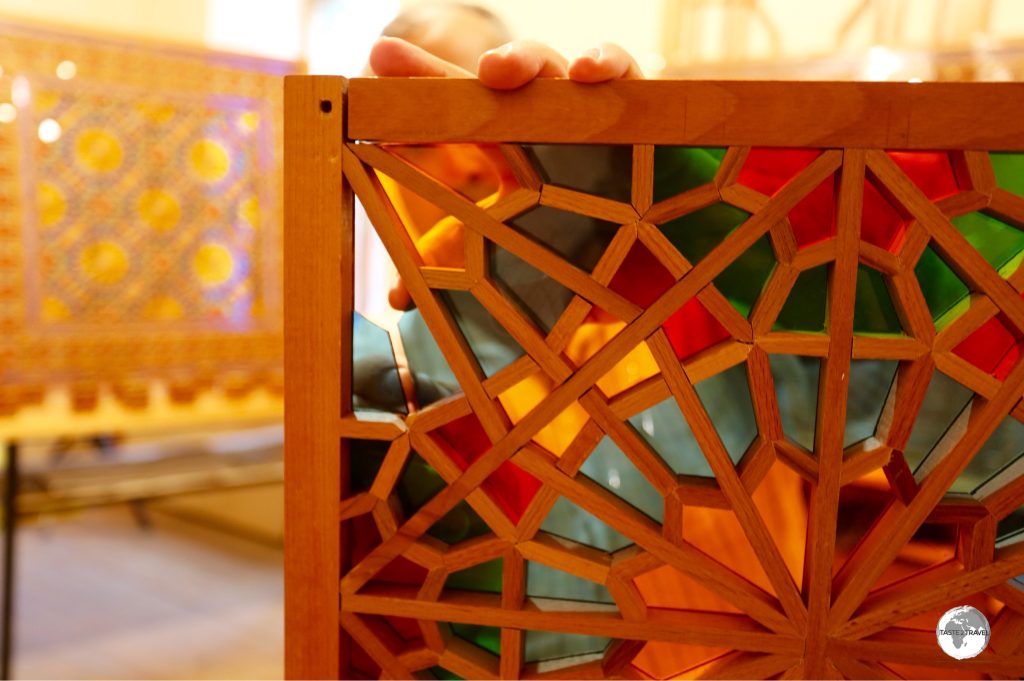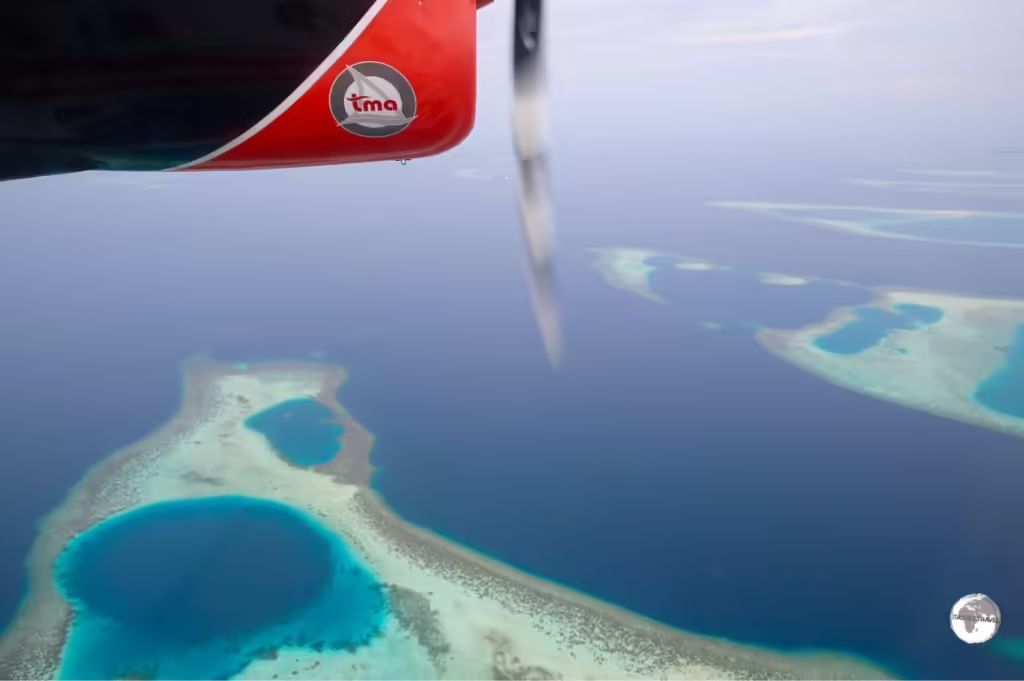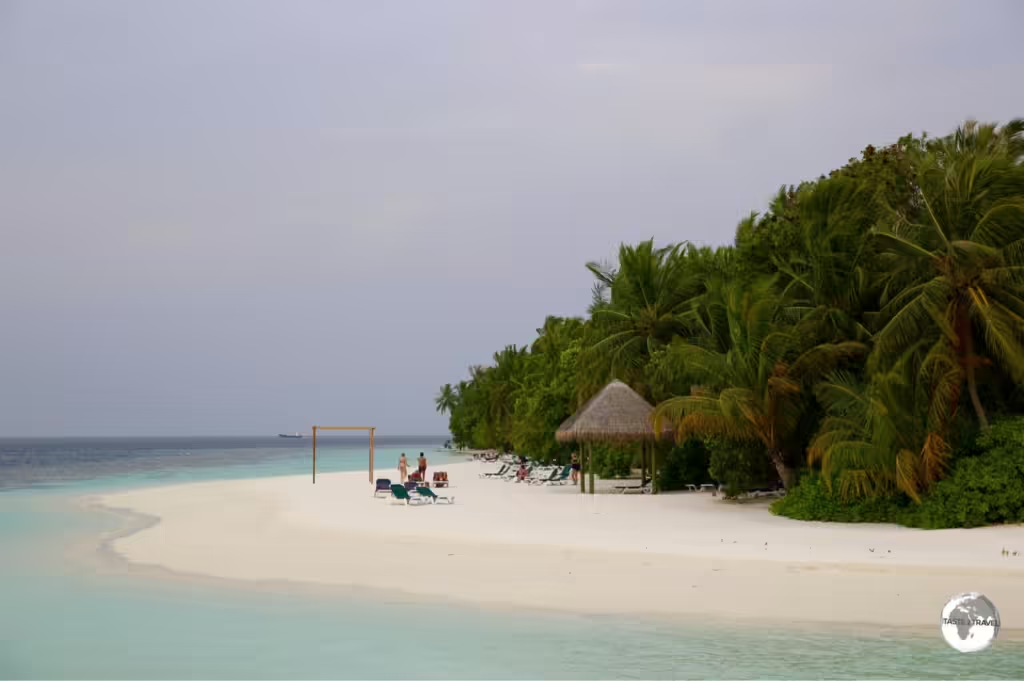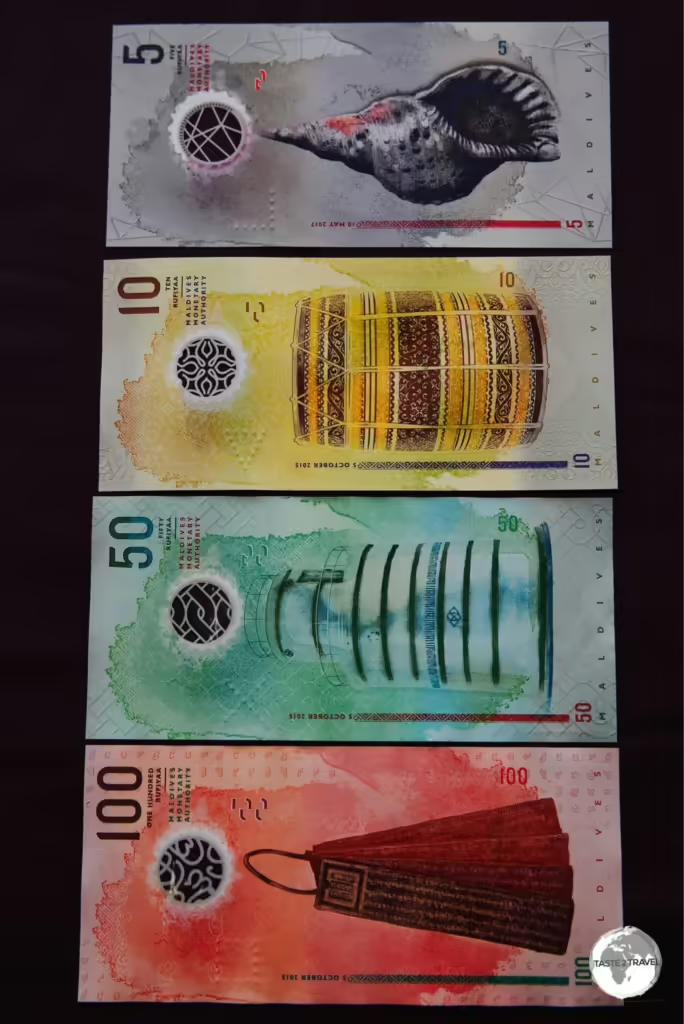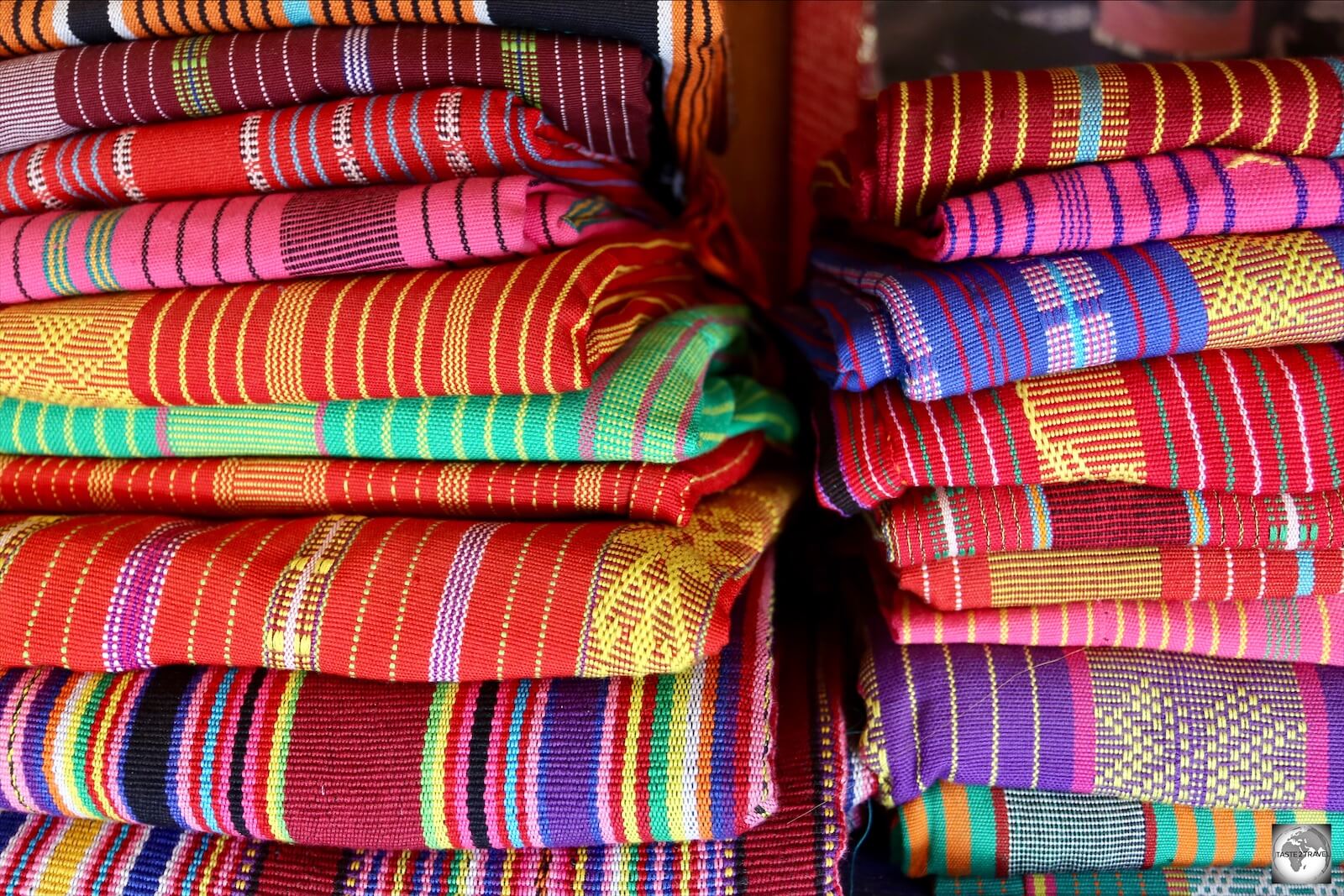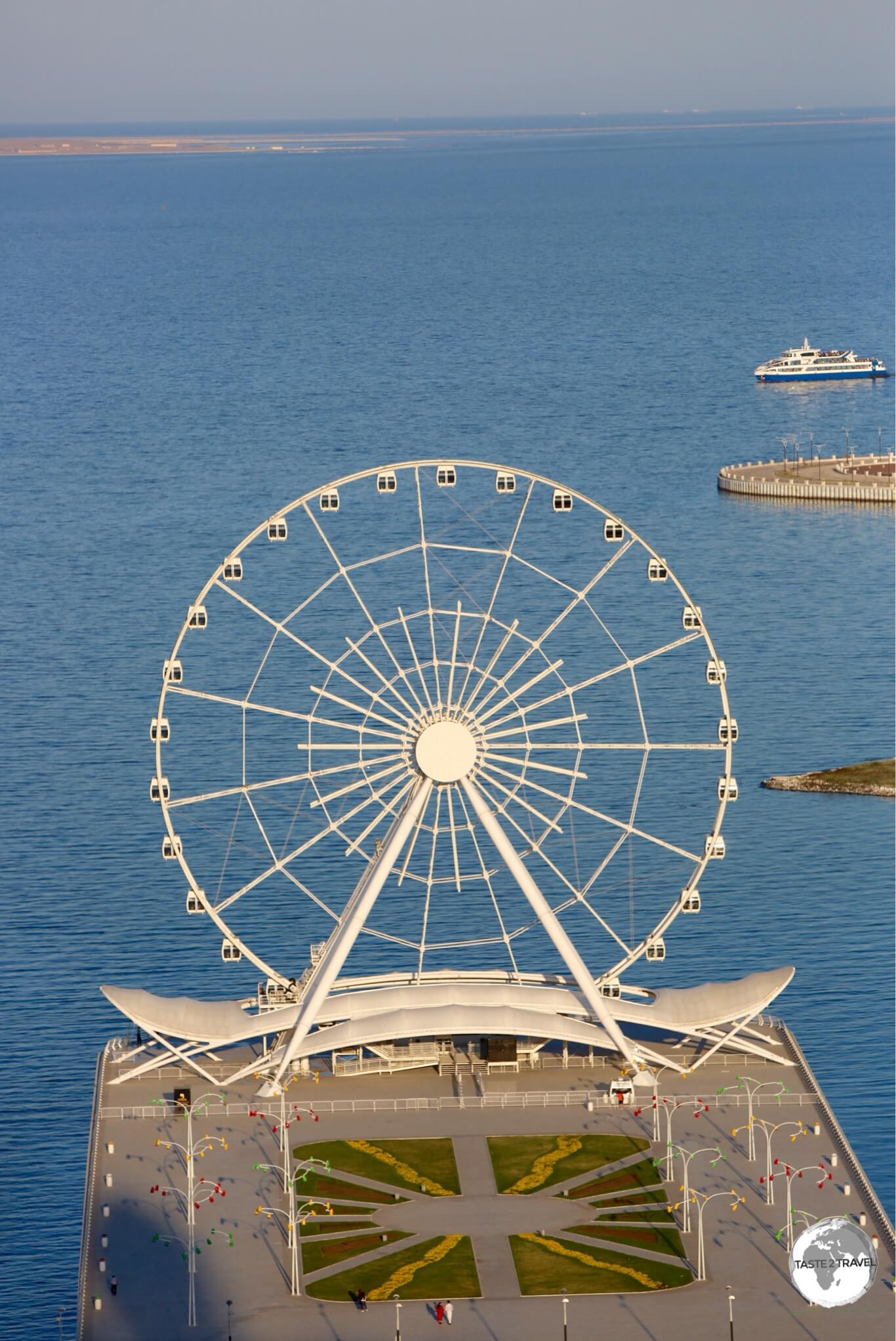Iraqi Kurdistan Travel Guide
This is an Iraqi Kurdistan Travel Guide from taste2travel.
Date Visited: August 2022
Introduction
Unfortunately, for the past few decades, Iraq has been in the news headlines for all the wrong reasons. However, peace and stability have been the norm, for many years, in the autonomous region of Iraqi Kurdistan.
I first got the idea to visit Iraqi Kurdistan while having breakfast in a hotel in Singapore in 2019. I was sat next to a Kurdish father and daughter who had fled from Iraqi Kurdistan, to the safety of Australia, to avoid persecution during the rule of Saddam Hussein.
They were returning to Australia following a visit to see family and friends in Iraqi Kurdistan. They assured me that the region was safe to visit and that I would receive a warm welcome from the Kurds!
How right they were!

Erbil Citadel has been the site of human settlement for more than 6,000 years.
Of all the places I have visited on planet Earth, Iraqi was country/ territory # 213, I can say that the Kurds are some of the friendliest people I have every had the pleasure to spend time with.
Every day, I was overwhelmed by Kurdish hospitality. Whether paying for a glass of tea, a taxi ride or even a meal – payment was often refused as I was a guest in the land of the Kurds.
The staff at my hotel in Erbil – the wonderful Erbil View Hotel – assured me that the hotel was my home away from home. They even surprised me by getting my crumpled jacket dry-cleaned! Truly amazing hospitality!

One of many gold shops at Sulaimaniyah souk.
For those who wish to visit Iraq, but are not keen on venturing into federal Iraq (which will be covered in my next Travel Guide), Iraqi Kurdistan offers a ‘lite’ version of Iraq. Security and safety are not an issue here.
Whereas there is still a heavy military presence on the streets of federal Iraq, you will see little military in Iraqi Kurdistan. If you are comfortable travelling in places like Jordan, Turkey or Egypt, you’ll feel totally comfortable travelling in Iraqi Kurdistan.

An elderly Kurdish porter at Sulaimaniyah souk.
Crime is non-existent in Iraqi Kurdistan! Never did I feel unsafe or threatened!
Money changers at Erbil and Sulaimaniyah souks sit on the footpath with glass cabinets full of wads of currency, including bundles of US$100 notes. Never is crime a concern in this part of the world!
As was explained to me by a Kurd, over one of many glasses of sweet tea, you could leave your car unlocked, on the street, all night and no one will touch it!
Whenever shopkeepers inside the souk leave their shop for lunch or prayer, they never lock-up but simply place an object in the doorway to indicate that the shop is temporarily closed. No one would ever think of entering the shop!

The Grand Mosque of Sulaimaniyah during the magical blue hour.
As an autonomous region, Iraqi Kurdistan has its own government – the Kurdistan Regional Government (KRG) and has its own immigration policy, which is separate to that of Iraq.
If you enter Iraqi Kurdistan, you will receive a visa which is only valid for travel inside Iraqi Kurdistan. You cannot enter federal Iraq using this visa.
You must also be careful when taking long distance taxis in Kurdistan as some of them transit through federal Iraq – which you cannot do if you are travelling on a Kurdistan visa.
An Iraqi visa however, is valid for travel everywhere inside Iraq – including Iraqi Kurdistan. If you plan to travel to both Iraq and Iraqi Kurdistan, it makes sense to first enter through federal Iraq where you will only need to purchase one visa (US$77), rather than two! More on this in the ‘Visa Requirements‘ section below.
Location
Erbil, Iraq
Iraqi Kurdistan, also known as Southern Kurdistan, refers to the Kurdish-populated region of northern Iraq.

A map showing Iraqi Kurdistan, in red, and its neighbours.
An autonomous region, which functions separately to ‘Federal’ Iraq, Iraqi Kurdistan is comprised of the four governorates of Erbil, Sulaymaniyah, Duhok and Halabja.

A map of Western Asia, which highlights the region of Kurdistan in beige.
Source: Wikipedia.
Located in Western Asia, Iraqi Kurdistan is one of the four parts of the trans-national “Kurdistan”, which also includes Northern Kurdistan in south-eastern Turkey, Western Kurdistan in northern Syria and Eastern Kurdistan in north-western Iran.
People

Young Kurdish boys visiting Erbil citadel.
Iraqi Kurdistan is home to approximately six million Kurds, who represent 15% of the total population of Iraq (40,000,000).

Completed in 2007, the striking, Jalil Khayat Mosque, is a Sunni Islamic Mosque in Erbil.
Nearly all Iraqi Kurds consider themselves Sunni Muslims, with 98% of Kurds in Iraq identifying themselves as Sunnis and only 2% identifying themselves as Shias.
Apart from the Kurds living in Iraqi Kurdistan, around 300,000 Kurds live in the Iraqi capital Baghdad – 50,000 in the city of Mosul and around 100,000 elsewhere in Federal Iraq.

The ‘Story of Iraqi Kurdistan’ as illustrated on a hand-woven carpet at the Kurdish Textile Museum in Erbil.
The total population of greater Kurdistan is estimated to be between 25 and 35 million, making the Kurds the fourth-largest ethnic group in the Middle East.

A tailor, with his two sons, inside Erbil souk.
The Iraqi Kurds have historically enjoyed more national rights than Kurds living in neighbouring states.

Kurdish skullcaps on display at the Kurdish Textile Museum in Erbil.
Meanwhile, across the border in Turkey, the Turkish government continues a 40+ year battle against the Kurdistan Workers’ Party (PKK), a rebel group who are fighting for an independent Kurdistan state within Turkey.

A Kurdish tailor at Erbil market, wearing traditional clothing.
One security threat to Iraqi Kurdistan today comes from the Turkish military, who occasionally launch attacks against supposed PKK bases which are located inside Iraqi Kurdistan.
Kurdish Cinema

Lina Raza, the Program Director of the Slemani International Film Festival, inside Cinema Salim.
Kurdish arthouse cinema is centred around the Cinema Salim in Sulaimaniyah (Slemani).
The driving force behind Kurdish films, and documentaries, is the wonderful Lina Raza, an Iraqi Kurd who maintains residences in Sulaimaniyah, London and Stockholm.
When she’s not treading the red carpet at the Cannes Film Festival, Lina is the Program Director of the annual Slemani International Film Festival which showcases both World and Kurdish cinema.

Lina Raza, displaying the Golden Pine Cone which is awarded at the Slemani International Film Festival.
While Cannes awards its Palme d’Or (“Golden Palm”), the Slemani festival awards a Golden Pine Cone.
If you’re interested in catching the latest Kurdish arthouse offerings, movies are screened every day at Cinema Salim.
History

Settled more than 6,000 years ago, Erbil Citadel is thought to be one of the longest continuously inhabited sites in the world.
Ancient Iraq
During ancient times, lands that now constitute Iraq were known as Mesopotamia (“Land Between the Rivers”), a region whose extensive alluvial plains gave rise to some of the world’s earliest civilizations and empires since the 6th millennium BC.
The “Cradle of Civilisation” is a common term for the area comprising modern Iraq and was the birthplace of many valuable inventions and discoveries, including writing system, mathematics, time, calendar, astrology and law code.
The capital of Iraqi Kurdistan, Erbil, is centred around Erbil Citadel which has been the sight of settlement for more than 6,000 years.
Kurdistan and the Kurds

A statue, in Erbil, of Masoud Barzani, president of Iraqi Kurdistan from 2005 to 2017.
The Kurdish people are originally an Iranian ethnic group who are native to the mountainous region of Kurdistan in Western Asia, which spans south-eastern Turkey, north-western Iran, northern Iraq, and northern Syria.
After World War I and the defeat of the Ottoman Empire, the victorious Western allies made provision for a Kurdish state in the 1920 Treaty of Sèvres.
However, that promise was broken three years later, when the Treaty of Lausanne set the boundaries of modern Turkey and made no provision for a Kurdish state, leaving Kurds with minority status in all of the new countries.
The Kurds of Iraq came under British colonial rule after the defeat of the Ottoman Empire in 1918. Frustrated in their hopes for independence, Kurdish leaders launched a series of rebellions against British and subsequent Iraqi rule.
These rebellions were ruthlessly quashed, most notoriously in the late 1980s when Saddam Hussein attacked the Kurds with armed forces. This involved the deliberate targeting of civilians with chemical weapons, most notoriously in the town of Halabja in 1988.

Street art in Erbil speaks of a turbulent history.
US-led Invasion
Throughout history, various Iraqi governments promised autonomy to the Kurds, but none of these promises came to fruition until the anti-Saddam international coalition, led by the United States, established a partial no-fly zone in northern Iraq in 1991 after the first Gulf War.
This allowed Kurdish leaders, and their Peshmerga armed forces, to consolidate their hold on the north after Iraqi forces withdrew, and provided the basis for the 2005 constitutional settlement, which recognised an autonomous Kurdistan region in the north of the country, run by the Kurdistan Regional Government.
Iraqi Kurds played an important role in the Iraq War and were important allies of the US military. Kurdish parties joined forces against the Iraqi government during the war in the Spring of 2003, with Peshmerga forces playing an important role in the overthrow of the Iraqi government.
Pro-Independence Vote
On the 25th of September 2017, Iraqi Kurds voted overwhelmingly (92.73%) for independence in a non-binding referendum.
This angered Baghdad, which moved to reassert its authority by recaptured territory held by the Kurds outside their autonomous region. It also seized control of oilfields that are the lifeblood of the Kurdish economy and imposed an air blockade that held for six months.
Flag
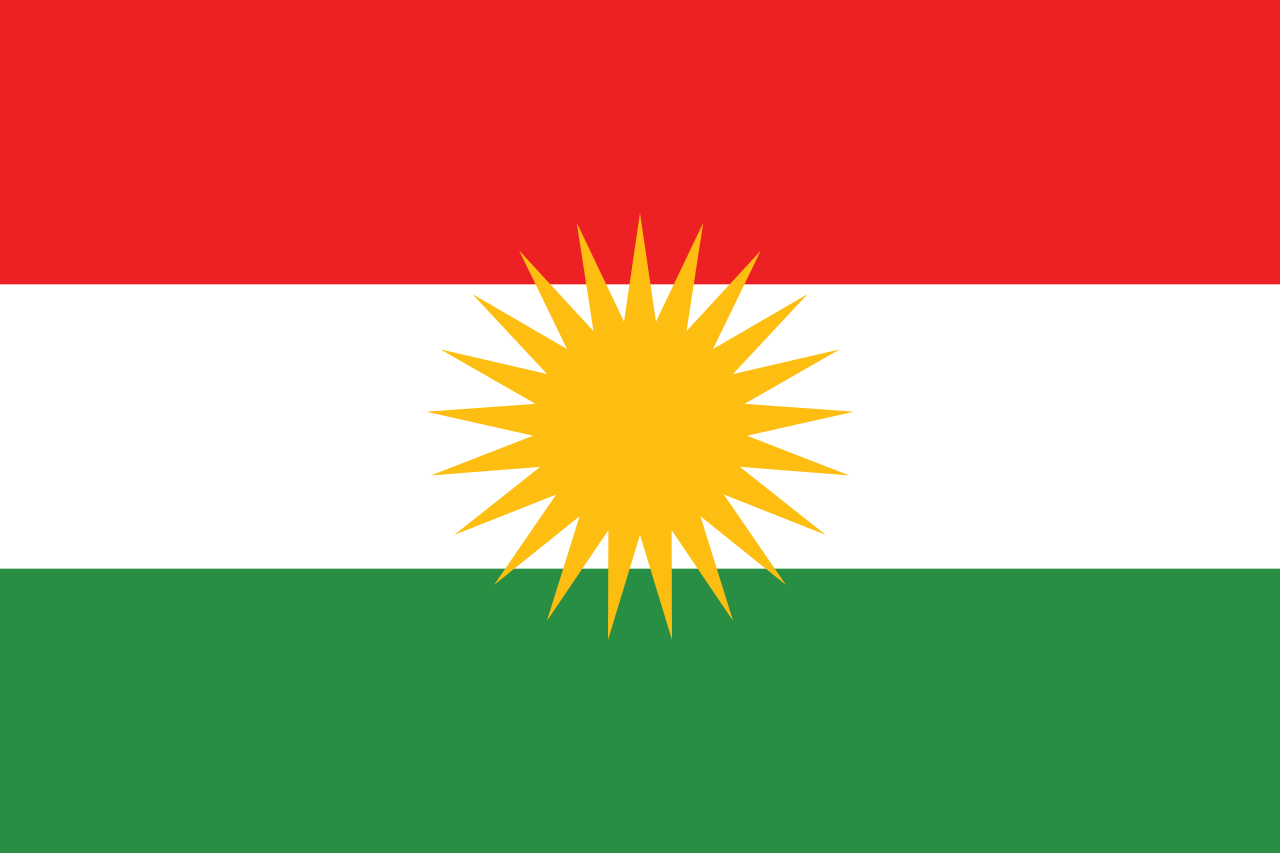
The flag of Kurdistan.
The flag of Kurdistan was created by the Society for the Rise of Kurdistan in 1920. The Kurdish flag is the most important symbol of Kurdish identity and, since it was first hoisted in 1946, has become a symbol of the national identity of the Kurds.

The flag of Kurdistan, flying over Erbil citadel.
The design of the flag includes:
- A red field which symbolises ‘the blood of the martyrs and the continued struggle for freedom and dignity‘.
- A white field which symbolises ‘peace and equality‘.
- A green field which symbolises ‘the beauty and landscapes of Kurdistan‘.

Kurdistan flag skullcaps, on sale at Erbil souk.
Superimposed over the top of the three bands is a golden, 21-ray sun, a symbol which has been used by Kurds since antiquity. The number ’21’ is a venerated number by the Kurds, representing rebirth/ renaissance in the ancient and native Kurdish religion of Yazdanism.
Currency

My 100 uncirculated, IQD 250, bank notes.
The official currency of Iraqi Kurdistan is the Iraqi dinar (IQD).
Current bank notes, which are issued by the Central Bank of Iraq, include IQD 250; 500; 1,000; 5,000; 10,000; 25,000 – and the rarely seen 50,000.

Iraqi dinar bank notes.
If you’re interested in getting your hands on a brand-new IQD 50,000 note, I often received these from Bank of Baghdad ATMs.

Iraqi IQD 50,000 bank notes.
The Iraqi dinar isn’t a free-floating currency, with the exchange rate set by the Iraqi government at US$1 = IQD 1,460. This exchange rate is factored into government budgets until at least 2026.

Iraqi IQD 25,000 bank notes.
Exchange Rates
The current exchange rate of the Iraqi dinar against US $100 and €100 are:
Saddam Hussein Dinars

Saddam Hussein dinars make for an interesting souvenir.
Prior to the 1st Gulf War in 1990, high quality Iraqi dinar bank notes were printed in the United Kingdom by Thomas De La Rue.
Following the introduction of United Nations sanctions after the war, Iraq was no longer able to place currency orders with Thomas De La Rue.
A new series of bank notes were printed locally, which featured a portrait of Saddam Hussein. Known as “Saddam dinars”, the notes were of inferior quality, compared to the former UK-made bank notes, which then become known as “Swiss dinars”.
Due to prolonged international sanctions on Iraq, along with excessive government currency printing, the Saddam dinar quickly became worthless.
After Saddam Hussein was deposed in the 2003 invasion of Iraq, the Iraqi government printed more Saddam dinar notes as a stopgap measure to maintain the money supply until a new currency could be introduced.
The market had become flooded with worthless Saddam dinars.

Wads of Saddam Hussein diners at a money exchange in Erbil souk.
Between 2003 and 2004, the Coalition Provisional Authority issued new Iraqi dinar notes, which were printed, once again, by Thomas De La Rue in the UK.
Trillions of new dinars were shipped to Iraq and exchanged for the old Saddam dinar notes at par value.
Today, wads of Saddam Hussein dinar notes can be found at money changers at Erbil and Sulaimaniyah souks and are popular souvenirs.
Each note can be purchased for IQD 1,000 (USD$0.68), making them more valuable as a souvenir than what they were when in circulation.
Banking Services
Credit Cards

The Family Mall in Sulaimaniyah, where almost all stores, including department stores, accept cash only!
Iraqi Kurdistan is a cash society. Credit cards are accepted almost nowhere!
While shopping malls in Erbil and Sulaimaniyah feature prominent international brands like Blackberry, GEOX, Samsonite, Merrell, DKNY, Armani, Levi’s and Mango, none of these stores accept credit cards. All payments are to be made in cash!
The only place I was able to use my credit card in Iraqi Kurdistan was at the Erbil View Hotel, my wonderful hotel in Erbil.
ATMs

ATMs at the Family Mall in Erbil are hidden away inside the cinema complex.
You will never find an ATM on the street in Iraqi Kurdistan. ATMs are only found inside the larger shopping malls and at the two international airports – Erbil and Sulaimaniyah.
In all malls, the ATMs are hidden away in an obscure corner – finding them is like a treasure hunt!

A rare sight in Iraqi Kurdistan – a bank branch inside Family Mall in Erbil.
Bank branches are also non-existent, with informal money changers providing money exchange services on the street.
I did find a branch of the Kurdistan International Bank inside the Family mall in Erbil, although their ATM’s do not accept foreign credit cards.
Not all banks are on the international network. The two banks which I found to be most reliable, and whose ATM’s accept international credit cards (i.e. Mastercard and Visa), are the Bank of Baghdad and Cihan Bank.
ATM’s can be found inside the Family Mall in Erbil and Sulaimaniyah, and inside most other large malls.
Sightseeing
Erbil

Souvenir shops opposite Erbil souk.
Home to 1.5 million friendly souls, Erbil is the capital and largest city of Iraqi Kurdistan. The city is centred around the ancient Erbil Citadel which has been occupied for more than 6,000 years!

Tailors, inside Erbil souk.
Alongside the citadel are the Ottoman-era Erbil souk, the centre of commercial activity and the popular Fountains of Shar Park which comes to life around sunset.
Erbil Citadel

Settled for more than 6,000 years, Erbil Citadel is one of the longest, continuously inhabited, places on Earth.
Located at the heart of Erbil city, Erbil Citadel is located atop an ancient tell, or occupied mound, which has been the scene of continuous settlement for more than 6,000 years. Archaeologists believe that layers of history lay buried beneath the tell.
The earliest evidence for occupation of the citadel mound dates to the 5th millennium BC, and possibly earlier. The citadel gained particular importance during the Neo-Assyrian period.

A giant flagpole stands at the centre of Erbil Citadel.
Erbil Citadel thrived until the Mongols arrived in 1258 CE. They captured the citadel and sacked the city, sending it into decline.
The citadel, which is a UNESCO World Heritage site, has, unfortunately, been reconstructed in many places.
This reconstruction is currently ongoing, which seems to go against the rules for a World Heritage Site. The government plans to have 50 families live in the citadel once it is renovated.

Historic buildings inside Erbil Citadel.
The citadel is home to the Kurdish Textile Museum which shouldn’t be missed. Also nearby is the Erbil Stones and Gemstones Museum which features both local and international gemstones.
Opening Times:
Entrance to the citadel, which is free of charge, is possible via two ramps between the hours of 9 am and 7 pm.
Kurdish Textile Museum

The Kurdish Textile Museum is a museum devoted to textiles produced in Iraqi Kurdistan.
Located inside a renovated mansion at Erbil Citadel, the Kurdish Textile Museum displays a collection of Kurdish textiles, including a dazzling array of carpets.

As a keen collector of handwoven, oriental carpets, I found the Kurdish Textile Museum to be fascinating.
As a keen collector of oriental carpets, I found the displays here to be fascinating, especially the collection of truly unique felt carpets.
The carpets are from a private collection, which is owned by a Kurdish family, who have sourced much material from Iranian Kurdistan, since carpet production is limited in Iraqi Kurdistan.

Flat weave, kilim carpets, at the Kurdish Textile Museum in Erbil.
Opening Times: The Kurdish Textile Museum is open every day, except Friday, between 9 am and 6 pm. Entrance costs IQD1,000.
Erbil Stones and Gemstones Museum

One of the display rooms at the Erbil Stones and Gemstones Museum, which is located inside Erbil Citadel.
Located across from the Kurdish Textile Museum, the Erbil Stones & Gemstones Museum is literally the ‘jewel’ of Erbil Citadel.

Souvenir gemstone keyrings for sale in the gift shop at the Erbil Stones and Gemstones Museum.
This small museum is home to a collection of stones and gemstones which have been found in Kurdistan and further afield. The air-conditioned display rooms offer a wonderful respite from the blistering heat of Erbil.
Opening Times: Like the adjacent Kurdish Textile Museum, the Erbil Stones and Gemstones Museum is open every day, except Friday, between 9 am and 6 pm. Entrance costs IQD1,000.
Erbil Souk

Built during the Ottoman era, Erbil souk is the centre of commercial activity in the capital.
Lying in the shadow of Erbil Citadel, the sprawling Erbil Souk has been the commercial heart of Erbil for centuries. The current, charming bizarre, dates from the more recent Ottoman era.

Turkish delight is a popular product at Erbil souk.
Tucked away in the rabbit-warren of cool, covered laneways are shops selling absolutely everything. The souk is open all day and it a great place to escape the blistering midday heat.

Shops selling nuts and dried fruit are very popular at Erbil souk.
Especially popular are shops which sell mountains of freshly made Turkish Delight (lokum), dried fruits, nuts, local goat cheese, honey, homemade yoghurts and much more.
Due to the charm, variety and reasonable prices found at both Erbil and Sulaimaniyah souks, the modern malls which have recently been built, are normally deserted, with local shoppers clearly preferring to shop at the more traditional souk.

One of the many entrances to Erbil souk.
While the souk is crammed with stores selling modern appliances and gadgets, there are areas where traditional crafts, such as woodworking, and goldsmithing are still practiced.

One section of Erbil souk is home to many gold shops.
The gold souk is lined with many shops, whose dazzling window displays entice keen shoppers.

A hijab (head scarf) shop inside Erbil souk.
Another large section of the souk includes the textile section where you can find woman shopping for clothes and head dresses.
Fountains of Shar Park

A view of the Fountains of Shar Park from Erbil Citadel.
The small, but hugely popular, Fountains of Shar Park lie in the shadow of Erbil Citadel and across the road from the bustling souk.
Normally quiet during the day, the fountains are turned on around 5 pm, in time for the masses who arrive prior to sunset, to appreciate the cool breezes which are generated by the fountains.

A girl feeding pigeons in the Fountains of Shar Park.
As the sun sets, the park becomes a veritable carnival, complete with balloon sellers, fairy-floss sellers and coffee vendors, who pour coffee from large brass pots which are strapped to their backs.
Jalil Khayat Mosque

The stunning interior of the Jalil Khayat Mosque in Erbil.
A definite highlight of Erbil is the truly dazzling Jalil Khayat Mosque, which was completed in 2007.

The exterior of the Jalil Khayat Mosque in Erbil.
A Sunni Islamic Mosque, it was begun by Jalil Khayat who died in 2005. The mosque was completed two years later by his sons in memory of their father.

A photographer’s dream – the incredibly ornate Jalil Khayat Mosque in Erbil.
With a jaw-droppingly beautiful interior, the mosque’s style resembles the Mosque of Muhammad Ali in Cairo and the Blue Mosque in Istanbul.

When I visited, the mosque was closed but the caretaker opened it so I could take some photos.
Widely regarded as having one of the most beautiful interiors of any mosque, the Jalil Khayat Mosque is 15,000 square metres (160,000 square ft) and holds up to 2,000 people.

Stained-glass windows at the Jalil Khayat Mosque in Erbil.
Access:
The entire mosque complex is enclosed inside a high, ornate, cast-iron fence. When I visited, all gates were locked and there wasn’t a soul in sight.
I found a small entrance gate on the main street (opposite the mall) which was open. Inside this gate is a small air-conditioned office which is where the caretaker can be found. He opened the mosque for me so I could take photos. Normally the mosque is only open at prayer times.
This was a highlight of Erbil!
Mudhafaria Minaret

The 36-metre high Mudhafaria Minaret dates from the 12th century CE.
Located in Minaret Park, the 36-metre high Mudhafaria Minaret dates from the late 12th century AD. It features an octagonal base decorated with two tiers of niches, which is separated from the main shaft by a small balcony.
Sulaymaniyah

One of many honey sellers at Sulaimaniyah souk.
Known as Sulaymaniyah, Slemani, Suli, Sulaimaniyah and even Sulaimani, the 2nd largest city of Iraqi Kurdistan (population: 740,000) is a charming and inviting place.
If you have to give preference to either Erbil or Sulaymaniyah, I would spend more time in Sulaymaniyah. Whenever you mention Suli to Iraqi Kurds, they will beam with pride and tell you about their ‘city of learning and culture’.

Turkish Delight seller in Sulaimaniyah souk.
While Erbil is a big, bustling capital, and is located on a very hot, desert plain, Sulaimaniyah is a leafy, green city, where large, green parks, provide breathing space and the surrounding mountains provide the occasional cool breeze.

Spice seller at Sulaimaniyah souk.
Sulaymaniyah is home to the University of Sulaimani, one of the most important scientific and cultural institutions in Iraqi Kurdistan. The American University in Iraq also has its campus in Sulaimaniyah.

A vendor at a fruit juice shop, hidden by a wall of fruit, in Sulaimaniyah souk.
This university town is home to a sizeable student population, who infuse the city with a certain, funky flair. It has a very different ambiance from Erbil.

The cafe at Cinema Selim in Sulaimaniyah – home to the annual Slemani International Film Festival.
Slemani is also home to a budding Kurdish arthouse cinema scene – please refer to the previous ‘Kurdish Cinema‘ section for more.
Cinema Selim, which is ground zero for Kurdish cinema, plays daily arthouse features. The cinema also serves as the venue for the annual Slemani International Film Festival.
In between screenings, the cinema cafe is a great place to relax, serving very good barista-made coffee.
Sulaimaniyah is home to one of two international airports in Iraqi Kurdistan – see the ‘Getting There‘ section below for more details. Frequent shared taxis connect Sulaimaniyah with Erbil and most other cities in federal Iraq.
Amna Suraka (Red Jail) Museum

The Hall of Mirrors at the Amna Suraka Museum in Sulaimaniyah.
A highlight of Sulaimaniyah is the Amna Suraka (Red Jail) Museum which once served as the northern headquarters (from 1979 to 1991) of Saddam Hussein’s Intelligence Service, known as the Mukhabarat but colloquially referred to as ‘Amn‘.

The buildings at the Amna Suraka Museum are riddled with bullet holes, a reminder of the fierce battle which took place in 1991 between Iraqi and Peshmerga forces.
The buildings on the site, which are riddled with pockmarks from gun fire, were built in 1979 by an East Germany construction company, with many of the buildings looking like they were transplanted from communist East Berlin.

Iraqi tanks, which were captured by Peshmerga fighters, are parked in the courtyard of the Amna Suraka Museum.
The grounds of the museum contain tanks and other weapons which the Kurdish Peshmerga forces captured from the Iraqi Army during their liberation of the complex in 1991.

One of the memorial halls at the Amna Suraka Museum is lined with photos of the victims of the Al-Anfal Campaign.
During the Al-Anfal Campaign, in which Saddam Hussein tried to wipe out the Kurdish population, the headquarters were used to imprison and torture thousands of Kurds.
During the 1991 Battle of Sulaimaniyah, Iraqi security officials and soldiers retreated to the Amn headquarters which served as the Baathist stronghold in the city.
After two days of intense fighting, Kurdish Peshmerga forces overran the headquarters. Rebels executed 300 Amn agents, with angry civilians killing many others.
In 2003, the Amna Suraka Museum was opened at the site, to serve as a reminder of the atrocities which had taken place under Saddam’s rule.
Of the various buildings in the museum complex, a highlight is the Hall of Mirrors which is lined with 182,000 shards of glass, each commemorating Kurds killed during the genocidal Al-Anfal Campaign. The hall also contains 4,500 backlights to represent the number of Kurdish villages destroyed during the campaign.
Other memorial halls contain photos and the names of thousands of Kurds who died as a result of the Al-Anfal Campaign.

A memorial hall at the Amna Suraka Museum lists the names of tens of thousands of Kurds killed during the Al-Anfal Campaign.
At the rear of the complex is the former jail house which has been left largely untouched.
What could be described as a ‘house of horrors’, the former jail house is lined with small cells which were crammed beyond capacity.

A former jail cell inside the prison house. Cells designed to accommodate 10 prisoners were often crammed with 50 prisoners.
Each cell had just one small window for ventilation near the ceiling. On the day I visited, the temperature outside was close to 50 degrees Celsius.
Cells, which were designed to hold 10 people, often held 50, with prisoners taking it in turns to sleep on the floor.

This wood-panelled room, inside the jail house, was used to torture prisoners.
While all the walls of the prison are cold, exposed concrete, one room stands out due to its warm, wood panelling.
Rather than being an inviting space, this room was used to torture prisoners.

A house of horrors – the former jail house at the Amna Suraka Museum.
The museum is a necessary, albeit harrowing, reflection of the large-scale oppression that the Kurds suffered under the rule of Saddam Hussein.
One of the most important museums in Iraqi Kurdistan!

“Vase of Flowers” graffiti, drawn by a former prisoner on the wall of one of the cells inside the jail house at the Amna Suraka museum.
Access:
Located in the suburbs of Sulaimaniyah, the museum is free of charge and is open six days a week, but closed each day for lunch from 12 pm to 1 pm.
Sulaymaniyah Souk

The large and sprawling Sulaimaniyah souk covers all of the downtown area.
Sulaymaniyah’s souk (bazaar) is without a doubt, the largest traditional market in Iraqi Kurdistan.

Textile shop at Sulaimaniyah souk.
The souk covers the entire downtown area of the city, with covered laneways stretching for kilometres in every direction.

Women, shopping for clothes and textiles at Sulaimaniyah souk.
Outside on the busy streets, the souk spreads its tentacles even further, with vendors selling fruits, vegetables, pets, clothing, shoes and so much more.
Small trucks, laden with melons and other produce occupy any available parking spaces. It’s a wonderfully intoxicating scene and, if you walk around with your camera out, everyone will be asking for their photo to be taken.

A tomato vendor in Sulaimaniyah, who really wanted his photo taken.
The busiest time for the market is later in the afternoon once the blistering heat has waned.
At around 7 pm, the evening ‘call to prayer’ rings out over the city, marking the official closing time for the market.

Another produce vendor, who wouldn’t let me pass until I had taken his photo.

Perfume shops in Sulaimaniyah souk offer the bases for all famous perfume brands, with a 50 ml bottle costing US$10.

A nut roaster at the Sulaimaniyah souk.

The gold market Sulaimaniyah souk is comprised of many laneways of goldsmiths.

Spices for sale at Sulaimaniyah souk.
Grand Mosque of Sulaimaniyah

The minaret of the Grand Mosque of Sulaimaniyah reminded me of minarets I’d seen in Uzbekistan.
Located in the heart of the old town, the Grand Mosque of Sulaimaniyah is one of the oldest mosques in the city.
It’s partially-tiled minaret is especially beautiful and is best photographed around sunset.
Chavi Land

“Chavi Land” is less ‘fun park’ and more ‘forlorn park’.
Located on a hill overlooking Sulaimaniyah is the rather depressing Chavi Land. What bills itself as a family ‘fun park’ has a distinctly forlorn feel to it. It’s all a little run down and poorly maintained. The toilets definitely should be avoided!
I arrived at 5 pm, in order to ride the teleferic (cable car) up onto the nearby mountain to take photos of the sun setting over Sulaimaniyah.

One way to beat the intense heat, amusements at Chavi Land are housed inside a large, air-conditioned, hall.
Due to yet another power outage (they occur regularly, about every hour, in Iraqi Kurdistan), nothing in the park was operating. An amusement park without any amusements!
I waited at the cable car station until the sun had set before returning to the city.
Halabja
Halabja Monument and Peace Museum

Halabja Monument and Peace Museum pays homage to the victims of this horrific attack.
Located in a far corner of Iraqi Kurdistan, close to the Iranian border, the otherwise non-descript town of Halabja made world news headlines in 1988, during the closing days of the Iran-Iraq war.

A display at the Halabja Monument and Peace Museum.
The town was the scene for a truly crazy act carried out by a crazed dictator, Saddam Hussein, who ordered the Iraqi Air Force to drop bombs containing lethal chemical weapons on the civilian population.

The main hall of the Halabja Monument and Peace Museum.
The attack, which took place on the 16th of March 1988, was part of the Al-Anfal Campaign, a campaign conducted by Saddam Hussein who was determined to exterminate the entire Kurdish population – who numbered around 8,000,000 at the time!
The attack was also an attempt to repel the Iranian Army, who had captured Halabja just 48 hours prior.
The incident was the largest chemical weapons attack directed against a civilian-populated area in history, and resulted in the deaths of between 3,200 and 5,000 people and injured 7,000 to 10,000 more.
A UN investigation concluded that mustard gas, along with other unknown chemical weapons, had been used in the attack.
Located on the outskirts of town, as you drive in on the main road from Sulaimaniyah, the Halabja Monument and Peace Museum pays homage to the victims of this horrific attack.

The original fighter jet, which dropped the chemical weapons on Halabja, is one of the displays at the museum.
The main hall of the museum contains the names of the victims, while outside, the original fighter jet which dropped the chemical bombs is on display.
Access:
The Halabja Monument and Peace Museum, which is free of charge, is open every day between 8 am and 12 pm, and then from 1 pm to 5 pm.
Getting There:
Halabja is located at the end of the road in Iraqi Kurdistan, inside a wide valley, surrounded by Iran.
Shared taxis from Sulaimaniyah cover the 73 km distance in one hour. It’s an easy day trip from Sulaimaniyah! A single seat, in a 4-seater taxi, costs IQD 10,000.
Accommodation
There’s no shortage of excellent mid-range and top-end hotels in Erbil and Sulaymaniyah. For backpackers, there is just one hostel in Iraqi Kurdistan which is the Dolphin hostel in Sulaymaniyah.
Due to the compact size of Iraqi Kurdistan, it’s possible to base yourself in the two main cities and then do day trips from there.
Many accommodation OTA’s (Online Travel Agents) do not cover Iraq. Booking.com is one OTA which does provide coverage of Iraq.
Erbil

My room at the Erbil View Hotel.
While in Erbil, I stayed at the excellent Erbil View Hotel. I rated this hotel 10/10 on booking.com – it is excellent in every respect.

The breakfast buffet at the Erbil View hotel.
The friendly and helpful staff at the hotel assured me that the Erbil View Hotel was my home away from home. I was made to feel welcome at all times. The rooms are comfortable and included a daily breakfast buffet.
While there are no restaurants in the area, the hotel restaurant serves excellent meals in the evening and also offers room service.
Erbil citadel and souk are a 10-minute walk from the hotel.
Sulaymaniyah

My room at the Khan Saray Hotel in Sulaimaniyah.
Located in the heart of Sulaimaniyah old town, the excellent Khan Saray Hotel is the kind of hotel you never want to leave. I extended my stay several times.

The beautiful Khan Saray Hotel where I paid just US$28 per night!
I booked the 1st night on booking.com at US$40. I then negotiated a direct rate of US$28 for subsequent nights. This represented excellent value, and included an amazing breakfast in the hotel restaurant.

My spacious room at the Khan Saray Hotel in Sulaimaniyah.
My large, spacious room faced inward to a shopping mall, which ensured that the room was nice and quiet. Outside, the sprawling souk surrounds the hotel. Everything is within walking distance from the hotel.
Highly Recommended!
Eating Out

Produce vendor at Sulaimaniyah souk. Iraqi Kurdistan has an abundance of fresh, tasty produce!
The cuisine of Iraqi Kurdistan is the same as that found throughout the region – lots of kebabs, and other grilled meats, served with freshly baked Khubz (flatbread), pickled vegetables and salad.
Kebabs are served for lunch and dinner, either as Shish kebab or as a sandwich.

Baking khubz (flatbread) in a traditional tannour (tandoor oven) in Sulaimaniyah.
Popular breakfast items include lentil soup, boiled eggs, tomatoes, cucumber, freshly made local yoghurt (often served with a drizzle of locally sourced honey), goat’s cheese and much more.
I could happily eat a Kurdish breakfast every day!

Truly unique! A honeycomb flatbread bakery in Sulaimaniyah souk.
All of this is served with an ample amount of warm, freshly baked Khubz.
Khubz tannour (flatbread)
What rice is to the Asians, Khubz (flatbread) is to the Kurds – a staple which is served, always freshly baked, at all meals.
Most bakeries in Iraqi Kurdistan bake their Khubz using traditional tandoor ovens, known locally as tannour. The bread spends less than one minute inside the oven before its ready to serve!
The following video was taken in a bakery in Sulaimaniyah, where the baker’s worked non-stop, throughout the day, producing a mountain of Khubz.
The finished bread is always laid out on a table at the front of the bakery and disappears as quickly as it’s produced – snapped up by hungry locals.
Restaurants

Typical meal of shish kebab, salad, pickled vegetables and flat bread.
Erbil

Mince-meat shish kebabs, being prepared for lunch, in a restaurant inside Erbil souk.
Strangely, the streets of downtown Erbil seem to lack restaurants. The best place to look for a meal is inside the souk where a number of restaurants serve typical Kurdish food.
Sulaimaniyah

The friendly server at a restaurant in Sulaimaniyah.
While restaurants are scarce in Erbil, there’s no shortage of places to eat in Sulaimaniyah. The standard food is minced-meat shish kebabs which are always served with a side salad of tomatoes and white onions, served both grilled and raw.
Apart from kebabs, many restaurants offer freshly roasted chicken which makes for a nice break.
Freshly baked flatbread is served with all meals, and is used instead of utensils, to either scoop up or pull food apart.
Halabja

Lunch in Halabja – roast chicken, served with stewed apricots and other sides.
Tiny Halabja offers at least one amazing restaurant which is located in the centre of town – every taxi driver knows the place and will drop you there!
Since the genocide museum is closed between 12 pm and 1 pm, the restaurant is a great place to relax and unwind.

The proud chef, at my lunch restaurant in Halabja.
My lunch consisted of the most succulent roasted chicken which was served with various sides, including stewed apricots. Delicious!
Cafés/ Tea Shops
Erbil

One of many cups of sweet tea which I drank while in Iraqi Kurdistan.
The staple refresher in Iraqi Kurdistan is sweet black tea, which is always served boiling hot, in small glasses.

This historic, and popular, tea shop is built into the walls of Erbil Citadel.
If you try to pick up the glass too soon, you’ll burn your fingers. Locals get around this by pouring a small portion of tea into the plastic saucer and slurping it from the there.
Before pouring the tea, two heaped spoons of sugar are added!

Wonderful coffee can be enjoyed at the tiny ‘Yolo Coffee’, which is hidden away inside Erbil souk.
Hidden away inside the busy laneways of Erbil souk are numerous coffee and tea houses which offer respite from all the hustle and bustle.
I especially recommend the excellent Yolo Coffee which is operated by a team of friendly Indians, who loved to talk about cricket with their regular Australian customer. I stopped by most days for my caffeine fix!

Coffee shop in Erbil souk.
Not to be outdone, the many tea houses inside Erbil souk are a great place to rub shoulders with the locals.

One of numerous tea sellers inside Erbil Souk. Notice that he can pour while posing for the camera. Talented!
I always had my camera out while in Erbil souk and everyone wanted their photo taken. Thanks to WhatsApp and Instagram, I’m able to send people their photos which is highly appreciated.
Sulaimaniyah

The walls of this groovy downtown cafe in Sulaimaniyah are decorated with books.
As with Erbil, there are many coffee and tea shops hidden away inside the rabbit-warren of covered laneways which comprise Sulaimaniyah souk.
The student population is responsible for many fine cafes in Sulaimaniyah, which is possibly the most cosmopolitan city in all of Iraq.

Tea sellers at Sulaimaniyah souk.
A line of locals outside one cafe in Sulaimaniyah souk led me to discover the most divine desert – a piece of freshly baked baklava, crumbled into a bowl of freshly made, warm custard.

Truly divine! Baklava crumbled over a bowl of warm custard at Sulaimaniyah souk!
Truly divine and, as is common in Iraqi Kurdistan, the cafe owner refused to accept payment from me.
Bars/ Alcohol
While there are no bars in Iraqi Kurdistan, there are some bottle shops where alcohol can be purchased.
Visa Requirements

My Iraqi Kurdistan visa-on-arrival.
As an autonomous region of Iraq, Iraqi Kurdistan enforces its own visa policy, with nationals of many countries able to apply for a Visa on Arrival (VOA) which is valid for 30-days.
Visas are issued at Erbil and Sulaimaniyah International airports from the Visa desk in the immigration hall. A 30-day visa costs US$77 which can be paid in either USD or Euro cash. Credit cards are not accepted!
It’s important to note that a visa issued in Iraqi Kurdistan is only valid for travel within Iraqi Kurdistan. However, a visa issued in federal Iraq is valid for travel everywhere in Iraq, including Iraqi Kurdistan.
You cannot travel into federal Iraq using an Iraqi Kurdistan visa.
If you are planning to visit both Iraqi Kurdistan and federal Iraq, it is best that you make your first entry into federal Iraq since your Iraqi visa is good for travel in all of Iraq, therefore you’ll only need to pay for one visa at US$77.
If you first enter Iraq through Iraqi Kurdistan, and wish to travel into federal Iraq, you will need to fly into federal Iraq and purchase an additional Iraqi visa at US$77 – i.e., you will need to pay for two visas at US$77 each.
Note: Many shared taxis in Iraqi Kurdistan transit through federal Iraq during their journey’s. A prime example of this is the journey from Erbil to Sulaymaniyah. There are two ways to travel on this route; either via Tikrit (which is in federal Iraq) or via the town of Dukan (which is in Iraqi Kurdistan).
If you are travelling on an Iraqi Kurdistan visa, you are not allowed to transit through federal Iraq. You need to ensure you travel via Dukan and not Tikrit.
Prior to travelling, you should consult the Iraq Visa Policy.
Important Note Regarding the United States Visa Waiver Program
For non-U.S. passport holders, who normally travel to the United States under the Visa Waiver Program (VWP), aka ESTA, the following should be noted:
Travelers in the following categories are no longer eligible to travel or be admitted to the United States under the Visa Waiver Program (VWP):
- Nationals of VWP countries who have traveled to or been present in Iran, Iraq, North Korea, Sudan, Syria, Libya, Somalia and Yemen on or after March 1, 2011 (with limited exceptions for travel for diplomatic or military purposes in the service of a VWP country).
- Nationals of VWP countries who are also nationals of Iran, Iraq, North Korea, Sudan, or Syria.
Anyone who has travelled to any of the above listed countries will need to apply for a visa from a United States embassy before being able to visit the United States.
Getting There
Air

Erbil International Airport is one of two international airports in Iraqi Kurdistan.
There are currently two international airports operating in Iraqi Kurdistan; Erbil International Airport and Sulaimaniyah International Airport – with a third, Duhok International Airport, under construction.
Airport Security Checks
Due to the special security situation in Iraq, entering an Iraqi airport requires passing through several security checkpoints, before you even reach the terminal. Due to the time involved at each checkpoint, it’s wise to arrive at least 4 hours prior to your departure.
The following steps describe the process for accessing Erbil International airport:
Step 1: All arriving vehicles must first stop at a covered roadside checkpoint.
Everyone must exit the vehicle, all doors must be opened, along with the hood and bonnet.
Security personnel, with sniffer dogs, will inspect the contents of the car, check the engine and the boot compartment to ensure no weapons or bombs are being carried into the airport complex. All passengers receive a pat-down from security staff.
Step 2: Once cleared through the vehicle checkpoint, all passengers travel next to a security screening building which is located about 2 km from the airport terminal. No vehicles are allowed to proceed further beyond this point.
At this point, passengers undergo the first of three full airport security screenings, with all luggage being x-rayed.
Once cleared through security, passengers make their way onto shuttle buses which are parked at the rear of the building. These buses then transfer passengers to the actual terminal.
Step 3: Upon arrival at the terminal, passengers must once again pass through another security screening before entering the terminal.
Step 4: Once inside the terminal, you can check in for your flight.
Step 5: Once you have your boarding pass you can proceed to immigration and then the 3rd, and final, security screening!
Bring your patience!
Erbil International Airport

The departure hall at Erbil International Airport.
The main gateway to Iraqi Kurdistan is Erbil International Airport (IATA: EBL) which boasts a modern terminal which was completed in 2010. The airport has the distinction of having one of the longest runways in the world at 4,800 m (15,748 ft).
Visas-on-arrival are issued at the airport for certain nationalities (see the ‘Visa Requirements‘ section above for more details).
The following airlines provide services to/from Erbil International Airport:
- Air Arabia – flies to/from Sharjah
- AnadoluJet – flies to/from Adana, Diyarbakir, Gaziantep, Istanbul–Sabiha Gökçen
- Austrian Airlines – flies to/from Vienna
- Cham Wings Airlines – flies to/from Damascus
- Egyptair – flies to/from Cairo
- Emirates – flies to/from Dubai–International
- Eurowings – flies to/from Düsseldorf
- Fly Baghdad – flies to/from Aleppo, Ankara, Baghdad, Damascus, Istanbul, Medina
- flydubai – flies to/from Dubai–International
- FlyErbil – flies to/from Baku, Cologne/Bonn, Copenhagen, Düsseldorf, Hanover, Istanbul, Yerevan
- Iraqi Airways Amman–Queen Alia, Ankara, Baghdad, Baku, Berlin, Cairo, Copenhagen, Dubai–International, Düsseldorf, Frankfurt, Istanbul, Munich, Sulaymaniyah
- Lufthansa – flies to/from Frankfurt
- Mahan Air – flies to/from Tehran–Imam Khomeini
- Middle East Airlines – flies to/from Beirut
- Pegasus Airlines – flies to/from Ankara, Gaziantep, Istanbul–Sabiha Gökçen
- Qatar Airways – flies to/from Doha
- Royal Jordanian – flies to/from Amman–Queen Alia
- Turkish Airlines – flies to/from Istanbul

The modern terminal at Erbil International airport was inaugurated in 2010.
Sulaimaniyah International Airport
The 2nd international airport in Iraqi Kurdistan, Sulaimaniyah International Airport (IATA: ISU) is located 14 km (9 mi) outside the city of Sulaimaniyah.
Visas-on-arrival are issued at the airport for certain nationalities (see the ‘Visa Requirements‘ section above for more details).
The following airlines provide services to/from Sulaimaniyah International Airport:
- Condor – flies to/from Düsseldorf
- flydubai – flies to/from Dubai–International
- FlyErbil – flies to/from Düsseldorf
- Iraqi Airways – flies to/from Amman–Queen Alia, Baghdad, Baku, Basra, Beirut, Cairo, Dubai–International, Erbil, Frankfurt, London–Gatwick, Najaf, Tehran–Imam Khomeini
- Mahan Air – flies to/from Kish Island, Tehran–Imam Khomeini
- Pegasus Airlines – flies to/from Istanbul–Sabiha Gökçen
- Qatar Airways – flies to/from Doha
- Royal Jordanian – flies to/from Amman–Queen Alia
- Turkish Airlines – flies to/from Istanbul
Land
It’s possible to travel overland into Iraqi Kurdistan from either Iran, Turkey or federal Iraq.
Getting Around
Important Note:
Whenever travelling on highways in Iraqi Kurdistan, you must carry your passport. This can be requested at the numerous military checkpoints, although many times you will be simply waved through.
Taxis

Taxis parked outside Erbil Citadel.
The easiest way to get around cities in Iraqi Kurdistan is by taxi. Although not metered, most drivers are honest and charge around IQD 4-5,000 for any trip around town. You should always agree on the fare prior to commencing your journey.

Taxis in Iraq can be identified by their red license plates.
Taxis in Iraqi Kurdistan are easily identified thanks to their large red license plates.
Long-distance Taxis

Long-distance shared taxis waiting at Sulaimaniyah taxi station.
The best way to travel between cities in Iraqi Kurdistan is with shared taxis, which depart from long-distance taxi garages.
Taxis carry four passengers, with the fare between Erbil and Sulaimaniyah costing IQD 20,000 per seat.
In Sulaimaniyah, a new taxi garage has recently been opened, but is inconveniently located 10 km outside of town, on the main road to Erbil. The cost of reaching the garage from downtown Sulaimaniyah is IQD 10,000.
Rental Car

An Iraqi Kurdistan car license plate.
There are many rental car companies in Erbil and Sulaimaniyah, although hiring a private driver for the day is possibly cheaper than renting a car and allows you to leave the driving to a local who knows the roads.
The following car rental companies are located in Erbil:
- Advantage Car Rental – Located in downtown Erbil.
- Europcar Erbil – Located at Erbil International Airport.
- Hertz Rental Car – Located at Erbil International Airport and downtown.
- Avis Rental Car – Located at the Divan Hotel in downtown Erbil.
That’s the end of my travel guide for Iraqi Kurdistan.
If you wish to provide any feedback on this guide, you can leave a comment below.
Safe Travels!
Darren
Follow me on Instagram
[instagram-feed feed=1]
Iraqi Kurdistan Travel Guide Iraqi Kurdistan Travel Guide Iraqi Kurdistan Travel Guide Iraqi Kurdistan Travel Guide Iraqi Kurdistan Travel Guide
Iraqi Kurdistan Travel Guide Iraqi Kurdistan Travel Guide Iraqi Kurdistan Travel Guide Iraqi Kurdistan Travel Guide Iraqi Kurdistan Travel Guide
Iraqi Kurdistan Travel Guide Iraqi Kurdistan Travel Guide Iraqi Kurdistan Travel Guide Iraqi Kurdistan Travel Guide Iraqi Kurdistan Travel Guide
Iraqi Kurdistan Travel Guide Iraqi Kurdistan Travel Guide Iraqi Kurdistan Travel Guide Iraqi Kurdistan Travel Guide Iraqi Kurdistan Travel Guide






